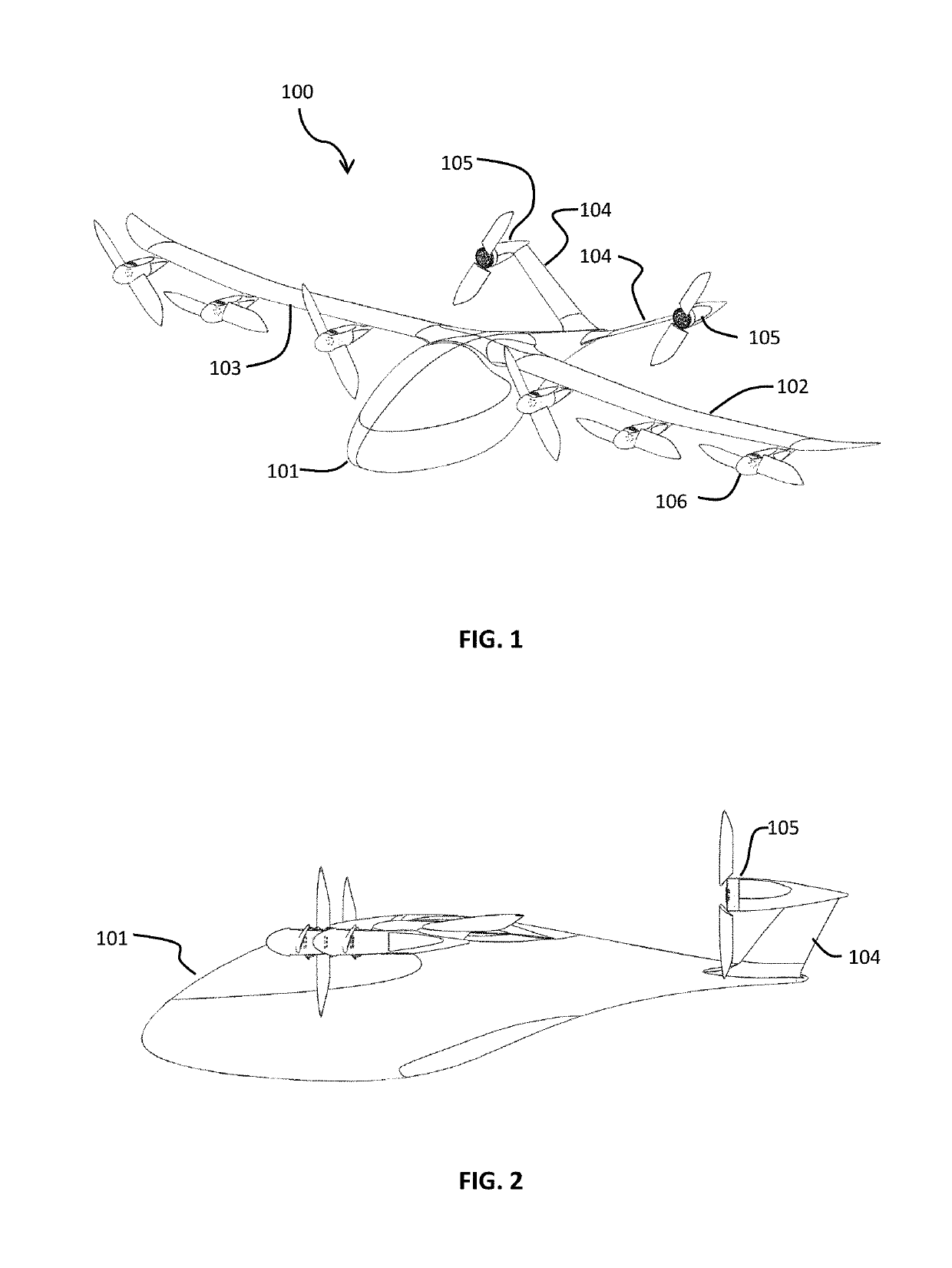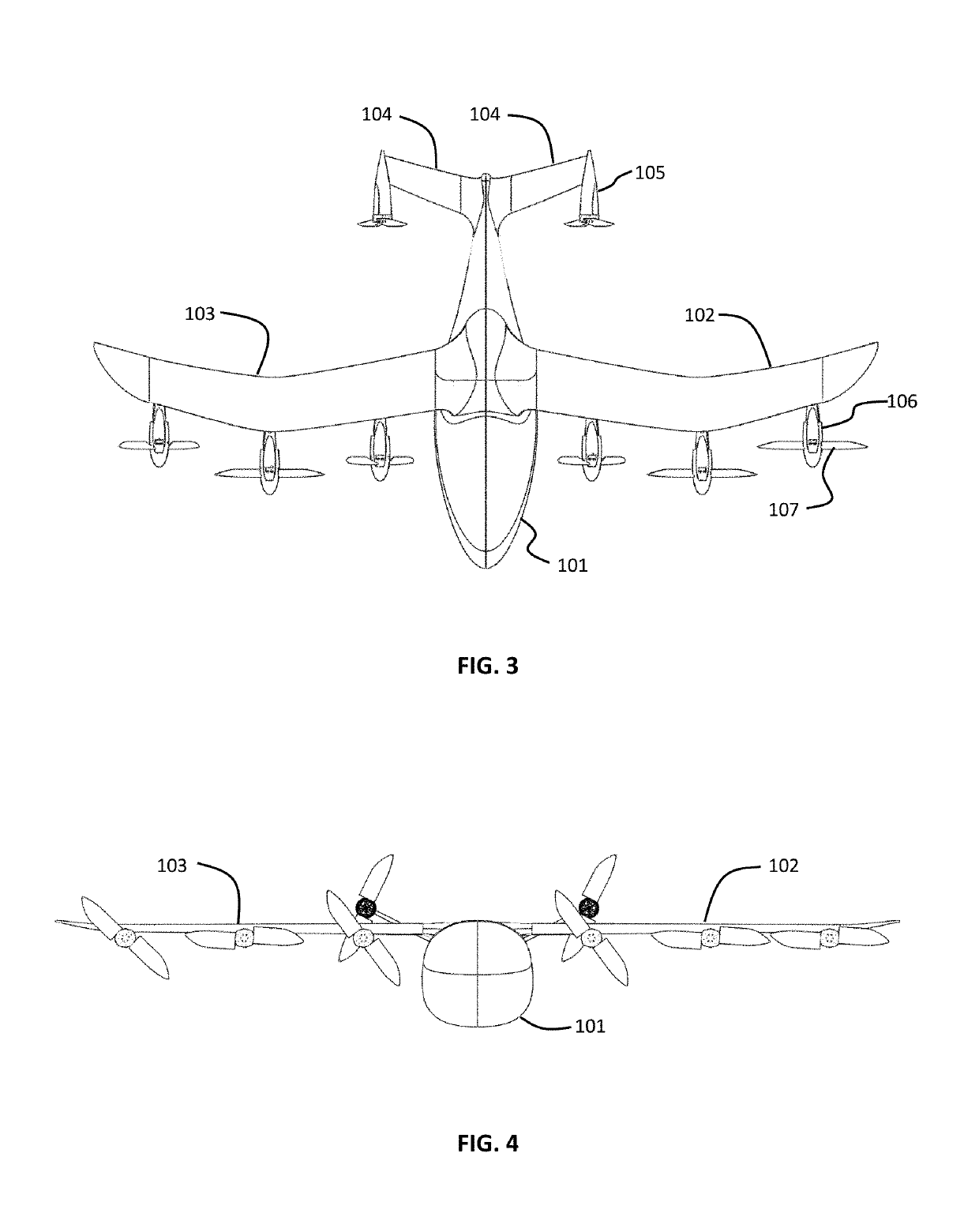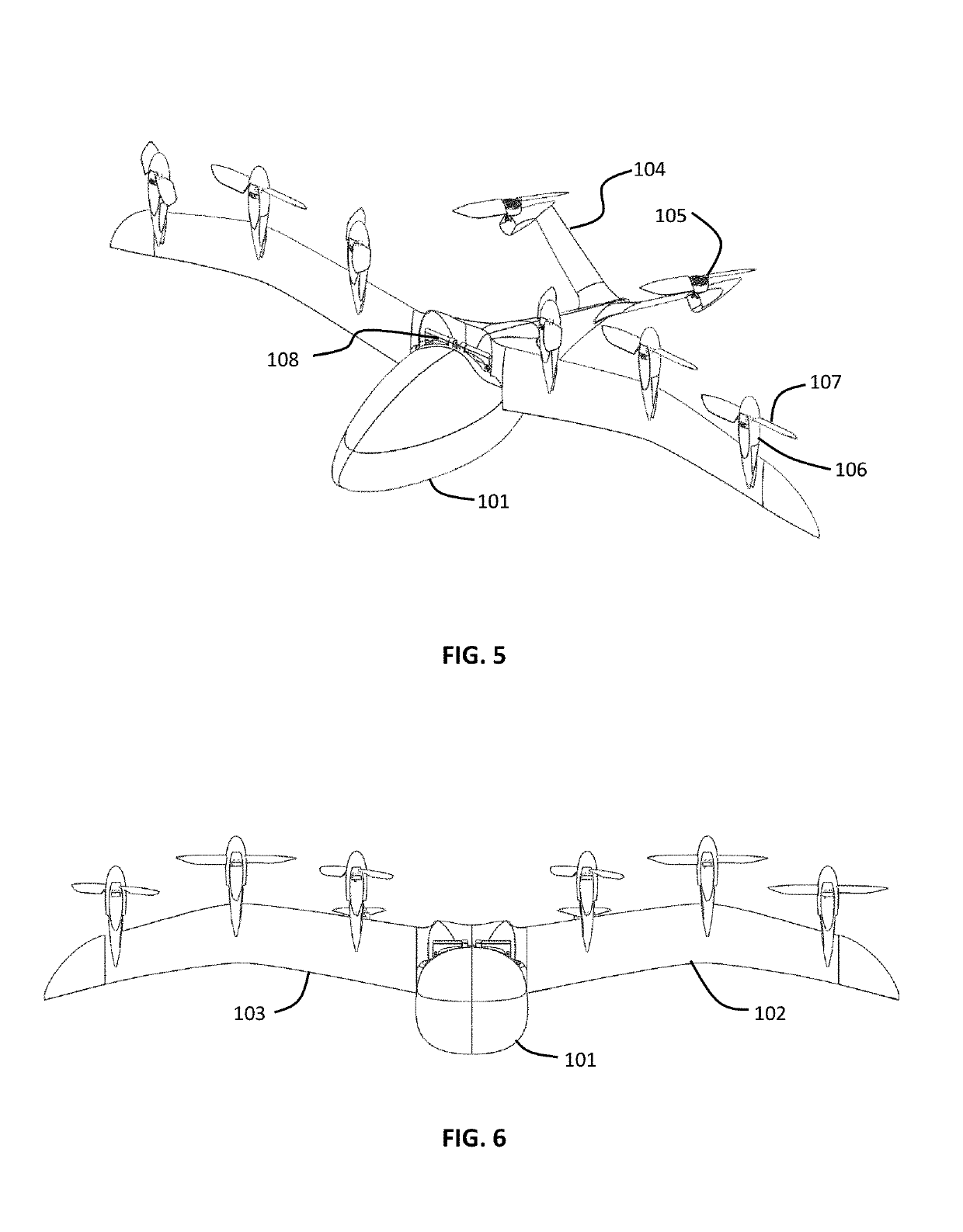Aerodynamically efficient lightweight vertical take-off and landing aircraft with pivoting rotors and stowing rotor blades
a technology of rotor blades and rotor blades, which is applied in the direction of rotocraft, vertical landing/take-off aircraft, propellers, etc., can solve the problems of power requirements mismatch, and achieve the effect of reducing drag in all flight modes
- Summary
- Abstract
- Description
- Claims
- Application Information
AI Technical Summary
Benefits of technology
Problems solved by technology
Method used
Image
Examples
first embodiment
[0071]In the present invention, as seen in FIGS. 1-4, an aerial vehicle 100 is seen in first forward flight configuration, as would be seen just after having transitioned from a vertical take-off configuration. In another forward flight mode, the blades of the wing mounted rotors will stow and nest, as discussed below. The aircraft body 101 supports a left wing 102 and a right wing 103. Motor driven rotor units 106 include propellers 107 which may stow and nest into the nacelle body. The aircraft body 101 extends rearward is also attached to raised rear stabilizers 104. The rear stabilizers have rear motors 105 attached thereto. In some aspects, the rear motors may also have front hubs, or spinners, which are omitted from some Figures for illustrative purposes.
[0072]As seen in top view in FIG. 3, the wings 102, 103 are partially swept forward. Aerial vehicles according to embodiments of the present invention may include partially or wholly forward swept wings with spanwise distribut...
second embodiment
[0081]In the present invention, as seen in a vertical take-off configuration in FIGS. 29-32, an aerial vehicle 200 uses forward swept fixed wings 202, 203 with rotors of different types adapted for both vertical take-off and landing and for forward flight. The aircraft body 201 supports a left wing 202 and a right wing 203. Motor driven rotor assemblies 206, 207 on the wings include propellers which may stow and nest into the nacelle body. The aircraft body 201 extends rearward is also attached to raised rear stabilizers 204. The rear stabilizers have rear rotor assemblies 205, 208 attached thereto. The aerial vehicle 200 is seen with two passenger seats side by side, as well as landing gear under the body 201. Although two passenger seats are illustrated, other numbers of passengers may be accommodated in differing embodiments of the present invention.
[0082]As seen in top view in FIG. 32, the wings 202, 203 are swept forward. Aerial vehicles according to embodiments of the present ...
third embodiment
[0090]In the present invention, as seen in a vertical take-off configuration in FIGS. 45-48, an aerial vehicle 300 uses forward swept wings 302, 303 with rotors of different types adapted for both vertical take-off and landing and for forward flight. The aircraft body 301 supports a left wing 302 and a right wing 303. Motor driven rotor assemblies 306, 307 on the wings include propellers which may stow and nest into the nacelle body. The aircraft body 301 extends rearward and is also attached to raised rear stabilizers 304. The rear stabilizers have rear rotor assemblies 305, 308 attached thereto. The aerial vehicle 300 is adapted for two passenger seats side by side, as well as landing gear under the body 301.
[0091]The wing mounted rotor units 306, 307 are adapted to provide vertical thrust during take-off and landing modes. The inner rotor units 306 are adapted to deploy to a VTOL configuration using linkages as seen in FIG. 38. The blades of the inner wing rotor units 306 are ada...
PUM
 Login to View More
Login to View More Abstract
Description
Claims
Application Information
 Login to View More
Login to View More - R&D
- Intellectual Property
- Life Sciences
- Materials
- Tech Scout
- Unparalleled Data Quality
- Higher Quality Content
- 60% Fewer Hallucinations
Browse by: Latest US Patents, China's latest patents, Technical Efficacy Thesaurus, Application Domain, Technology Topic, Popular Technical Reports.
© 2025 PatSnap. All rights reserved.Legal|Privacy policy|Modern Slavery Act Transparency Statement|Sitemap|About US| Contact US: help@patsnap.com



